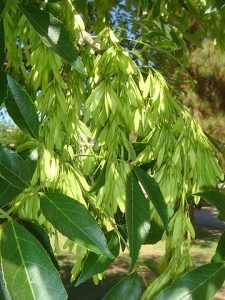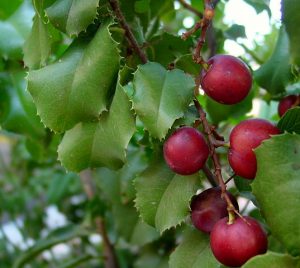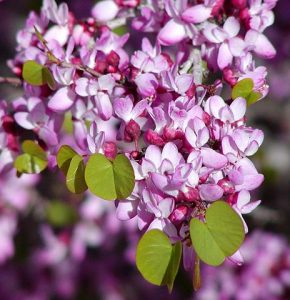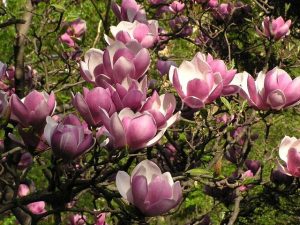In California, we face an entirely different garden and yard situation than a majority of the country does. We have to think about out water usage, the amount of work we have to do for the health of our trees, and what trees will even grow in these conditions. One of the best ways to avoid problems? Going native. Trees that are native to California tend to take less water than other trees and will grow without many problems. Trees that you find in other parts of the country or world won’t do that. Instead, you’ll make problems worse by using too much water to keep them alive, only to face disease or infestation.
All of the trees on our list of the best trees for a California yard are drought tolerant. While this doesn’t mean that can ignore them, it does mean that you don’t have to worry as much. Note that this is only after a tree has been established. While they are still a seedling and connecting with the yard, you do have to give them plenty of water. You can only start tapering back once they flourish. For the first three years, you should water them once a week. After that, you should play by ear to see when they need watering, if they do at all.
For less maintenance and a greener yard, consider these trees:
5. Velvet Ash

Credit: Miwasatoshi
- Requires very little water once established
- Grows quickly and is hardy
- Prefers partial to full sun
A Velvet Ash tree is one of the best trees to plant in an area where you think it will come into contact with a lot of abuse – from people, animals, or vehicles. According to the Department of Agriculture, a Velvet Ash tree is “recommended for buffer strips around parking lots or for median strip plantings in the highway; reclamation plant; shade tree; sidewalk cutout (tree pit); residential street tree.” They are also recommended for urban areas because pollution doesn’t seem to stop them.
These trees are beautiful, growing 50 feet high and 60 feet wide, meaning they take up quite a bit of space. They do drop some debris, but it tends to be easy to clean up and it doesn’t stain.
4. Catalina Cherry Tree

Credit: Noah Elhardt
- Very low water requirement
- Partial sunlight required
- Lives a long time once established
The Catalina Cherry tree is the perfect option for a smaller yard that wants a tree that looks more like a shrub. It is extremely easy to take care of and doesn’t require much watering at all. In fact, once established it is extremely hardy and will live for decades. Sometimes described as a shrub, they grow anywhere between 15 feet tall to 40 feet tall. It has white flowers and edible cherries, attracting butterflies and birds. In the right wind, it has a delicate scent that travels.
Most people choose the Catalina Cherry as a shade tree, according to the California Native Plant Society.
Note that if you want to buy this tree, you’ll have to go to the right nursery because you want to get the trees that haven’t been mixed with another type of tree, which is quite common.
3. Western Redbud

Credit: Stan Shebs
- Limited water requirements
- Grows best in partly sunny spots
- Doesn’t grow that tall
If you want a pop of spectacular color in your yard, the Western Redbud is going to be your best bet. With magenta-colored blossoms that stand out amidst the darker green of the leaves, this tree captures everyone’s hearts. The leaves themselves are “cute’ as well because they have rounded edges that make them look like hearts. They age to a unique blue-green color. During colder times, the long seed pods ripen to a purple brown color, according to Monrovia.
The flowers have a unique way of capturing the attention of rare butterflies and hummingbirds, making them great for seeing species you wouldn’t typically see. The trees grow between 10 to 20 feet and 10 to 15 feet wide, though it takes a few years to get that large.
2. California Box Elder

Credit: Herman, D.E.
- Requires little watering after being established
- Plant in spot that gets sun and shade almost equally
- Can grow in clay soil
Another local favorite is the California Box Elder tree. This could be because it grows up to 50 feet high and does especially well on mountains and can even grow in deserts. Once it has been established, it can live on less than five inches of water per summer.
As with many trees local to California, the pink flowers are the reason many people want to know more about it. To get those flowers, you want to look up the “flamingo” version.
While this tree sometimes gets a bit of a cold shoulder from locals because of the box elder bug, according to Trees of North America, it really isn’t that big of a deal. Many would love it though because it provides a lot of shade, gives a lot of visual interest and color, and stands up against almost any weather you throw at it.
1. Saucer Magnolia

Credit: ZP
- Requires moderate watering at first
- Loves sunny, warm spots to grow
- Beautiful flowers with different color options
Finally, the Saucer Magnolia is a little-known tree that is gorgeous. It has large blooms that come in colors of white, pink, and purple. The blooms start to appear in the middle of spring and last through summer, depending on the amount of rain.
The Saucer Magnolia tree grows to about 20 feet tall and wide. It does require some pruning and you have to shape it, especially once it has been established. As the tree ages, it will grow more slowly and you won’t have to do it as much.
Note that according to the Arbor Day Foundation, it does have a “thin bark that is easily damaged by lawnmowers and weed cutters,” so you’ll have to be careful.
California has a particularly difficult climate to grow trees in, especially for people who want flowering or shade trees that you see on the east coast. You have to be careful about which trees you select, where you plant them, and how you take care of them.
If you are worried, have questions, or want professionals to handle your tree concerns, give Econo Tree Service a call at (650) 200-2495.

